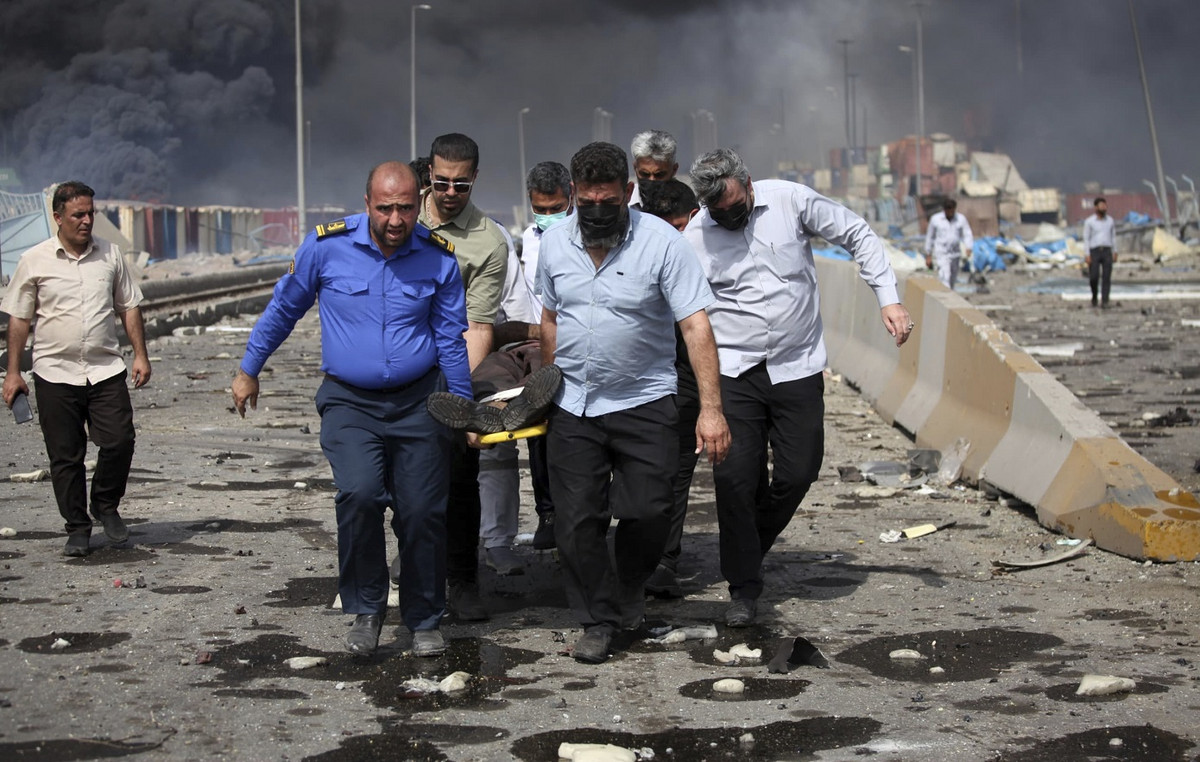The actions of stock Exchange Brazil linked to commodities recorded the highest increases since the beginning of the conflict in Ukrainewhile sectors linked to transport and vehicles were the ones that lost the most.
According to a survey by the consultancy Economatica, carried out at the request of the CNN Brasil Business, the highest increases were in the steel and metallurgy sectors (11.4%), chemicals (9.97%), agriculture (9.9%), mining (7.08%) and oil, gas and biofuels (6.03 %).
The biggest drops were in transportation (-4.33%), automobiles and motorcycles (-4.29%), diversified holdings (-4.22%) and civil construction (-3.65%).
The survey took into account the variation of actions by sector between the 23rd of February, the eve of the invasion russianuntil March 2, the seventh day of conflict.
The most liquid share of the company in the last 30 days was taken as a reference, in the case of more than one type, with an average daily trading volume of R$ 5 million per day in the period.
Benefited trajectory
Lucas Collazo, an investment specialist at Rico, says that the actions linked to commoditiesespecially oil, minerals and agricultural, are the ones that rise the most, benefited by the high prices of these products with the war.
“Russia and Ukraine are relevant producers and exporters of most of these commodities, such as corn, soybeans, oil, aluminum. In a period of conflict, carriers and insurers do not do transport, even more so with the war expanding to the entire Ukrainian territory,” he says.
With supply reduced and demand maintained, prices rise. O Petroleum Brent type, for example, has already exceeded US$ 110. This increase represents a significant increase in corporate profits, resulting in an attraction of investments.
The benefit is even greater for Brazil, one of the largest producers of commodities in the world.
XP’s chief strategist, Fernando Ferreira, cites the banks, with a more indirect benefit from conflict. The sector, with a strong presence on the stock exchange, has been favored by the flow of foreign investments. With the various sanctions applied against Russiathe country has been losing investments at a time of migration to markets linked to commodities and with discounted assets.
Brazil has become an attractive destination for this type of investment, with an inflow that started before the war and benefited the commodity and banking sectors. The outlook, according to experts, is favorable as it should gain strength with the resources leaving Russia.
For Collazo, this favorable flow tends to benefit the Brazilian stock market as a whole, with investments in funds and ETFs who invest in the entire basket of stocks. But the main gains should be, according to him, with companies linked to commodities.
Test your knowledge about the Ibovespa
Let’s start with an easy one: what is the Ibovespa?
Who is responsible for calculating the Ibovespa?
What types of assets are eligible to be listed on the Ibovespa?
Which of these is NOT a criterion for a stock to enter the Ibovespa
How many shares are currently in the Ibovespa theoretical portfolio?
How often is the Ibovespa theoretical portfolio reviewed?
What is the most important stock on the Ibovespa?
What is the smallest share on the Ibovespa?
Each Ibovespa point is equivalent to 1 real. This statement is
What is the historical record for closing the Ibovespa?
Try again!
Tip: follow CNN Business to understand more about Ibovespa
Nice job!
You know a lot about the Ibovespa, but you could know a little more
Sensational!
Congratulations! Are you an Ibovespa expert?
impaired trajectory
Collazo, from Rico, points out that the most affected sectors on the stock market tend to be those that have commodities as the relevant basis of the cost structure. It is the case of refrigeratorswhich use corn and soy as components of animal feed, or transportwhich depend on fuel prices.
If the values of these commodities rise, the profit margins get smaller, and the papers, less attractive.
“Most of the sectors in Brazil are negatively impacted because our rail and river network is small. Transport is via highway, and gasoline is an important component for logistics issues,” he says.
Ferreira, from XP, says that the sectors that have registered the most losses so far are those that suffer indirect consequences of the war. This is the case of exporters and industrial sectors exposed abroad and with dollarized revenue, affected by the uncertainty in global trade and the strengthened real thanks to the inflow of capital linked to commodities.
It also points to the Airlineswhich tend to decline due to the damage to profit margins caused by higher fuel prices, as a result of the rise in oil prices.
The XP strategist assesses that the sectors most linked to technology were already suffering from the outflow of investments amid the Monetary policy changes around the worldand this continues with the war, which reinforces bets on interest rate hikes.
Even so, he believes that losses are smaller here because Brazilian companies have little exposure to Eastern Europe and Russia. “Refrigerators have a little more and suffer a little now, but not much”, he assesses.
If the war goes on for a long time, Ferreira says that sectors linked to domestic consumption, especially the retail, should be affected. This is due to the expectation of inflation higher by commodities and higher interest rates, which reduce economic activity and harm the sector.
In a report, BTG Pactual points out that the segment with the most exposure to Russia is capital goods, with companies such as Weg, Randon and Iochpe, but even so with small share of trade. In 2021, for example, sales from the region represented 0.3% of Weg’s profit, and 0.3% of Randon’s total sales.
Among the indirect impacts, the bank cites the increase in raw materials, which can harm the industryas well as the effects of higher fuel prices for the logistics sector.
In another report, focused on the protein and grain sectors, BTG analysts say they expect limited effects from the trade restrictions with Russia and Ukraine, due to the low presence in the Russian market and high demand in China and the United States.
Even so, there are risks of margins more pressured by the increase in wheat and corn, which can also affect companies such as M. Dias Brancoowner of cookie and pasta brands such as Adria and Piraquê, which according to the report has 48% of costs linked to wheat and 16% to vegetable oils.
Another company that may be affected is ambevdue to the use of barley —which rises pulled by other agricultural commodities— for beer production.
Ferreira states that it is “always better to distinguish between sector and company, each one has specific issues, such as price policy, regional disposition”.
He cites as an example the Petrobraswhich has had losses even with oil on the rise, due to market doubts about respecting the price policy and the current lag in oil prices. fuels and oil.
“Other oil companies don’t have this doubt because they don’t even refine, they only sell crude oil”, he says. Even so, he considers that, at the moment, “the market is focused on the macro, and that ends up being predominant”.
Source: CNN Brasil
I am Sophia william, author of World Stock Market. I have a degree in journalism from the University of Missouri and I have worked as a reporter for several news websites. I have a passion for writing and informing people about the latest news and events happening in the world. I strive to be accurate and unbiased in my reporting, and I hope to provide readers with valuable information that they can use to make informed decisions.







